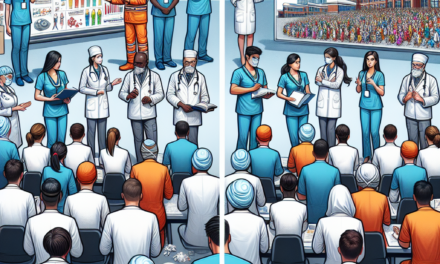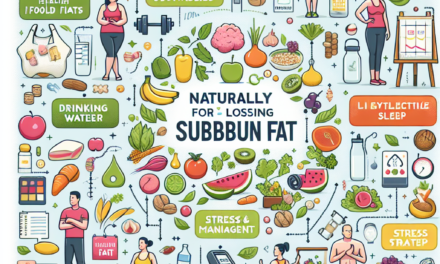The Vital Role of Rehabilitation in Supporting Mental and Physical Well-Being
Rehabilitation is a multifaceted process that plays a crucial role in enhancing both mental and physical well-being. It encompasses a range of services designed to help individuals recover from illness, injury, or addiction, and to improve their overall quality of life. This article delves into the vital role of rehabilitation, exploring its significance in various contexts, including physical rehabilitation, mental health rehabilitation, substance abuse recovery, the integration of holistic approaches, and the impact of technology in rehabilitation practices.
1. Understanding Physical Rehabilitation
Physical rehabilitation is a critical component of recovery for individuals who have experienced injuries, surgeries, or chronic conditions. The primary goal of physical rehabilitation is to restore function, improve mobility, and enhance the quality of life for patients. This process often involves a combination of physical therapy, occupational therapy, and other specialized treatments.
The Process of Physical Rehabilitation
Physical rehabilitation typically begins with a comprehensive assessment by healthcare professionals, including physical therapists and rehabilitation specialists. This assessment helps to identify the specific needs and goals of the patient. The rehabilitation process can be broken down into several key stages:
- Assessment: Evaluating the patient’s physical condition, limitations, and goals.
- Goal Setting: Collaborating with the patient to establish realistic and achievable rehabilitation goals.
- Intervention: Implementing a tailored rehabilitation program that may include exercises, manual therapy, and modalities such as ultrasound or electrical stimulation.
- Monitoring Progress: Regularly assessing the patient’s progress and adjusting the rehabilitation plan as needed.
- Discharge Planning: Preparing the patient for a successful transition back to daily activities and ensuring they have the necessary resources for continued recovery.
Benefits of Physical Rehabilitation
The benefits of physical rehabilitation extend beyond mere physical recovery. Research has shown that effective rehabilitation can lead to:
- Improved Mobility: Patients often experience enhanced range of motion and strength, allowing them to perform daily activities more easily.
- Pain Management: Rehabilitation techniques can help alleviate pain and discomfort associated with injuries or chronic conditions.
- Psychological Benefits: Engaging in rehabilitation can boost self-esteem and promote a sense of accomplishment as patients achieve their goals.
- Prevention of Future Injuries: Rehabilitation programs often include education on body mechanics and injury prevention strategies.
Case Study: The Impact of Rehabilitation on Stroke Survivors
A study published in the journal “Stroke” highlighted the importance of rehabilitation for stroke survivors. The research found that patients who participated in intensive rehabilitation programs showed significant improvements in mobility and independence compared to those who received standard care. The study emphasized that early intervention and personalized rehabilitation plans were key factors in achieving positive outcomes.
2. The Importance of Mental Health Rehabilitation
Mental health rehabilitation is an essential aspect of supporting individuals with mental health disorders. It focuses on helping individuals regain their mental well-being, improve their coping skills, and reintegrate into society. Mental health rehabilitation can take various forms, including therapy, medication management, and community support services.
Components of Mental Health Rehabilitation
Effective mental health rehabilitation involves a holistic approach that addresses the individual’s emotional, psychological, and social needs. Key components include:
- Therapeutic Interventions: Various forms of therapy, such as cognitive-behavioral therapy (CBT), dialectical behavior therapy (DBT), and group therapy, are utilized to help individuals process their experiences and develop coping strategies.
- Medication Management: For some individuals, medication may be necessary to manage symptoms of mental health disorders. Rehabilitation programs often include regular monitoring and adjustments to medication as needed.
- Social Support: Building a support network is crucial for recovery. Rehabilitation programs often facilitate connections with peer support groups and community resources.
- Life Skills Training: Teaching individuals essential life skills, such as stress management, communication, and problem-solving, can enhance their ability to navigate daily challenges.
Statistics on Mental Health Rehabilitation
According to the World Health Organization (WHO), approximately 1 in 4 people will experience a mental health disorder at some point in their lives. Despite the prevalence of these disorders, access to mental health rehabilitation services remains limited in many regions. A report from the National Alliance on Mental Illness (NAMI) indicates that only 41% of adults in the U.S. with a mental health condition received mental health services in the past year.
Case Study: The Role of Rehabilitation in Schizophrenia Recovery
A longitudinal study published in the “American Journal of Psychiatry” examined the outcomes of individuals with schizophrenia who participated in comprehensive rehabilitation programs. The findings revealed that those who engaged in structured rehabilitation experienced lower rates of hospitalization, improved social functioning, and greater overall satisfaction with life compared to those who did not receive rehabilitation services. This underscores the importance of tailored rehabilitation approaches in supporting individuals with severe mental health conditions.
3. Rehabilitation in Substance Abuse Recovery
Substance abuse rehabilitation is a critical process for individuals struggling with addiction. It involves a combination of medical treatment, counseling, and support services aimed at helping individuals overcome their dependence on drugs or alcohol. The rehabilitation process is often challenging but can lead to lasting recovery and improved quality of life.
The Stages of Substance Abuse Rehabilitation
Substance abuse rehabilitation typically follows a structured approach that includes several key stages:
- Detoxification: The first step in rehabilitation often involves detoxification, where individuals are medically supervised as they withdraw from substances. This process can be physically and emotionally challenging, requiring medical support to manage withdrawal symptoms.
- Therapeutic Interventions: Following detox, individuals engage in various therapeutic interventions, including individual counseling, group therapy, and behavioral therapies designed to address the underlying issues contributing to addiction.
- Relapse Prevention: Rehabilitation programs emphasize the development of coping strategies and skills to prevent relapse. This may include identifying triggers, developing a support network, and practicing stress management techniques.
- Aftercare Planning: Successful rehabilitation includes a comprehensive aftercare plan that provides ongoing support and resources to help individuals maintain their recovery after leaving the rehabilitation facility.
Statistics on Substance Abuse Rehabilitation
The National Institute on Drug Abuse (NIDA) reports that approximately 40-60% of individuals in recovery from substance use disorders will experience a relapse. However, research indicates that individuals who participate in structured rehabilitation programs are more likely to achieve long-term recovery. A study published in “JAMA Psychiatry” found that individuals who completed a comprehensive rehabilitation program had a 50% lower risk of relapse compared to those who did not receive treatment.
Case Study: The Effectiveness of Cognitive Behavioral Therapy in Addiction Recovery
A study published in the journal “Addiction” examined the effectiveness of cognitive-behavioral therapy (CBT) in treating individuals with alcohol use disorder. The research found that participants who engaged in CBT as part of their rehabilitation program reported significant reductions in alcohol consumption and improved coping skills. This highlights the importance of evidence-based therapeutic approaches in substance abuse rehabilitation.
4. Integrating Holistic Approaches in Rehabilitation
Holistic rehabilitation approaches recognize the interconnectedness of the mind, body, and spirit in the recovery process. These approaches aim to address the whole person rather than just the symptoms of a condition. Integrating holistic practices into rehabilitation can enhance overall well-being and promote a more comprehensive recovery experience.
Components of Holistic Rehabilitation
Holistic rehabilitation may include a variety of complementary therapies and practices, such as:
- Mindfulness and Meditation: Mindfulness practices can help individuals develop greater self-awareness and reduce stress, contributing to improved mental health.
- Yoga and Physical Activity: Incorporating physical activity, such as yoga, can enhance physical fitness while promoting relaxation and mental clarity.
- Nutritional Support: A balanced diet plays a crucial role in overall health. Nutritional counseling can help individuals make healthier food choices that support their recovery.
- Art and Music Therapy: Creative therapies can provide individuals with alternative means of expression and emotional processing, fostering healing and self-discovery.
Benefits of Holistic Rehabilitation
Research has shown that holistic rehabilitation approaches can lead to numerous benefits, including:
- Enhanced Emotional Well-Being: Holistic practices can help individuals manage stress, anxiety, and depression, contributing to improved mental health.
- Improved Physical Health: Engaging in physical activity and maintaining a balanced diet can enhance overall physical health and well-being.
- Increased Resilience: Holistic approaches can foster resilience by equipping individuals with coping strategies and tools to navigate challenges.
- Greater Sense of Community: Participating in group activities, such as yoga classes or art therapy sessions, can foster social connections and support networks.
Case Study: The Role of Yoga in Rehabilitation
A study published in the “Journal of Alternative and Complementary Medicine” explored the impact of yoga on individuals recovering from substance use disorders. The findings indicated that participants who engaged in regular yoga practice reported reduced cravings, improved emotional regulation, and enhanced overall well-being. This case study illustrates the potential benefits of integrating holistic practices into rehabilitation programs.
5. The Impact of Technology on Rehabilitation Practices
Advancements in technology have significantly transformed rehabilitation practices, making them more accessible and effective. From telehealth services to virtual reality therapy, technology is playing an increasingly vital role in supporting individuals on their rehabilitation journeys.
Telehealth in Rehabilitation
Telehealth services have become particularly important in the wake of the COVID-19 pandemic, allowing individuals to access rehabilitation services from the comfort of their homes. Key benefits of telehealth in rehabilitation include:
- Increased Accessibility: Telehealth eliminates geographical barriers, making it easier for individuals in remote areas to access rehabilitation services.
- Convenience: Patients can attend therapy sessions or consultations without the need for travel, saving time and reducing stress.
- Continuity of Care: Telehealth allows for ongoing support and monitoring, ensuring that individuals receive consistent care throughout their rehabilitation journey.
Virtual Reality Therapy
Virtual reality (VR) therapy is an innovative approach that immerses individuals in simulated environments to facilitate exposure therapy, pain management, and skill development. Research has shown that VR therapy can be effective in treating conditions such as post-traumatic stress disorder (PTSD) and phobias. For example, a study published in “Cyberpsychology, Behavior, and Social Networking” found that individuals with PTSD who participated in VR therapy experienced significant reductions in symptoms compared to those who received traditional therapy.
Wearable Technology in Rehabilitation
Wearable technology, such as fitness trackers and smartwatches, can play a valuable role in rehabilitation by monitoring physical activity, heart rate, and other health metrics. This data can provide valuable insights for healthcare professionals and help individuals track their progress. A study published in the “Journal of Medical Internet Research” found that patients who used wearable technology during rehabilitation reported higher levels of motivation and engagement in their recovery process.
Case Study: The Use of Telehealth in Mental Health Rehabilitation
A study conducted by the American Psychological Association examined the effectiveness of telehealth services in mental health rehabilitation. The findings revealed that patients who participated in teletherapy reported similar levels of satisfaction and therapeutic outcomes compared to those who attended in-person sessions. This case study highlights the potential of technology to enhance access to mental health services and support individuals in their recovery journeys.
Conclusion
Rehabilitation plays a vital role in supporting both mental and physical well-being. Through comprehensive approaches that address the unique needs of individuals, rehabilitation can lead to significant improvements in quality of life, functional abilities, and overall health. Whether through physical rehabilitation, mental health support, substance abuse recovery, holistic practices, or the integration of technology, the importance of rehabilitation cannot be overstated.
As we continue to advance our understanding of rehabilitation practices, it is essential to prioritize access to these services for all individuals in need. By fostering a supportive environment that encourages recovery and resilience, we can empower individuals to reclaim their lives and achieve their fullest potential.
In summary, the vital role of rehabilitation encompasses:
- The restoration of physical function and mobility through tailored rehabilitation programs.
- The enhancement of mental well-being through comprehensive mental health support.
- The provision of structured substance abuse recovery programs that promote lasting change.
- The integration of holistic approaches that address the whole person.
- The utilization of technology to improve access and effectiveness in rehabilitation practices.
By recognizing and investing in the importance of rehabilitation, we can create a healthier, more resilient society that supports the well-being of all individuals.





